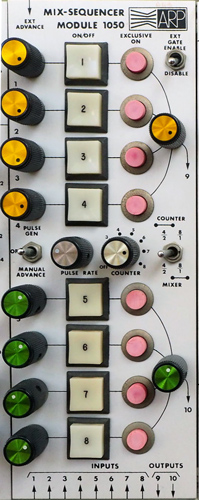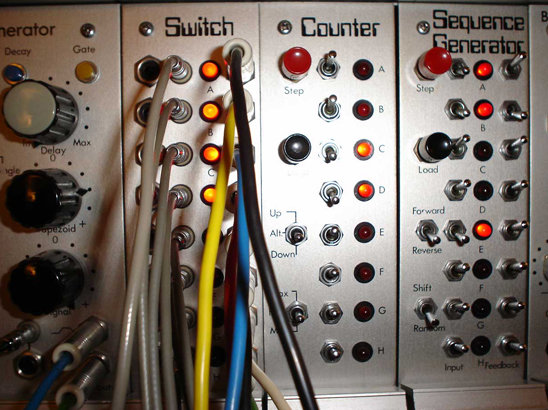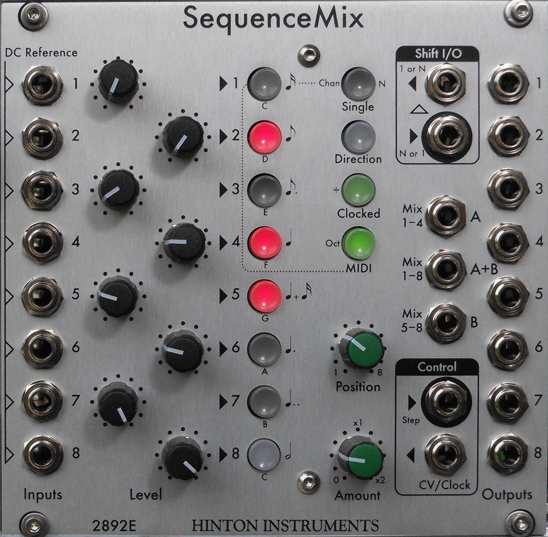 |
|
SequenceMix™The Background In the beginning was the ARP 2500 which had a unique interesting module, the 1050 Mix Sequencer. This was probably the first example in analogue synthesis of a clocked logic controlled audio mixer. This inspired the design of several digital logic modules taking the concept further:  19” rack-mounted ML1000 modular synthesizer system with prototype digital logic modules, designed by Graham Hinton in 1975. The ML1890 Switch module was eight channels using the first AD7510 CMOS analogue switches under control of an 8-bit digital bus on a rear panel DB15 connector. Each input had a summing junction for connection from a matrix. The ML1812 Sequence Generator was an 8-bit shift register that could be loaded and shifted manually or by logic signals on rear panel jacks. The pattern was output on a rear panel DB15 so by connecting to the Switch a rotating pattern could control the switch states. The ML1820 Counter was an 8-bit binary counter that could be preset or clocked manually or by logic signals on rear panel jacks. The counter could count up or down and be either free running or stop at the maximum or minimum. This allowed clock division ratios or single shot delays. The count was also output on a rear panel DB15. These modules were an experiment on using logic modules within an analogue synthesizer. There were several lessons learned:
The above setup could typically be used clocked by a cycling Envelope Generator. The EOC pulses would clock the Counter and the Counter would clock the Sequence Generator controlling the Switch. By setting one bit on the pattern this would be stepped at each cycle or multiple cycles and select a different CV, modulation or audio or combinations going through the Switch. By setting bits 1 and 5 the Switch could be used as two halves, for example 1-4 selecting a sound and 5-8 selecting a modulation. As the Envelope Generator outputs a trigger at each phase change a different modulation could be selected during the attack and decay. All the above functionality and more has been combined to make a 2000 series module equivalent: The 2892E SequenceMix.  SequenceMix ET. |
